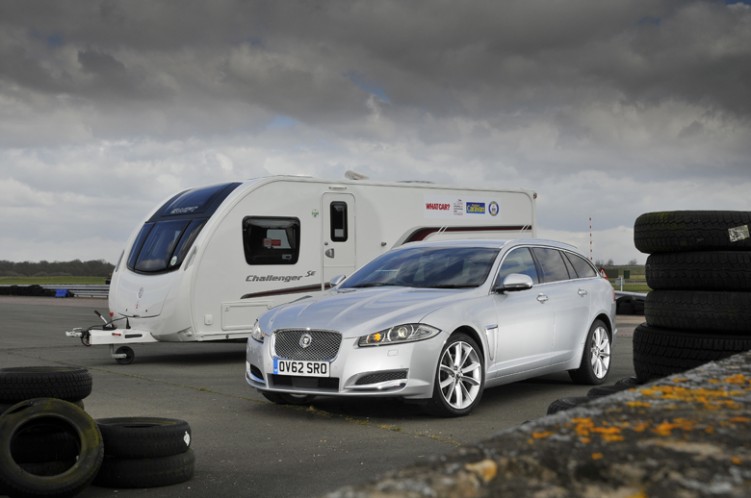


This makes the second year in a row for the Jaguar XF, but this time it’s the turn of the Sportbrake to take the honours in its class.
You’d expect the estate version of the XF to be more practical than the saloon, and you’d be right. But that’s not the only reason the Sportbrake has the edge over last year’s winner.
For some subtle reason the Sportbrake felt that bit better tied down than the saloon, and it was even more unshakable when pulling a caravan at high speeds and through extreme manoeuvres.
Strong crosswinds caused problems for several cars in this year’s tests, but the XF Sportbrake was one of a handful which seemed largely impervious. Through the lanechange test, too, the Jag was resolute and in control, however much the caravan slid around behind it.
As well as being exceptionally stable, our Sportbrake came with the 3.0-litre six cylinder diesel engine rather than the 2.2-litre four-cylinder in the saloon. The smaller engine wins the financial argument, but in terms of performance and refinement, the six-cylinder is a noticeable improvement. The 10.7-second 30-60mph time shows the Sportbrake to be one of the quickest cars in this year’s tests, but it’s not so much what the Jag does as the way it does it that makes the car seem special.
There’s a sense of occasion to the cabin, where the gear selector rises theatrically from the centre console when you prod the engine’s start button. And although there are more spacious estate cars, it’s reasonably practical, taking all but one item of our typical holiday luggage.
Any doubts about quality or reliability should be quashed by Jaguar’s first-place finish in the 2013 JD Power Customer Satisfaction Index.